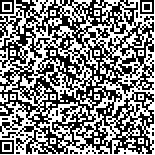下载中心
优秀审稿专家
优秀论文
相关链接
首页 > , Vol. , Issue () : -
摘要

研究横向风成脊的形貌特征有助于揭示火星稀薄大气层与火星表面之间的相互作用。本文提出了一种基于视觉基础模型的火星横向风成脊零样本遥感解译方法。首先,借助视觉基础模型的通用分割能力,在零样本的情况下实现火星高分辨率影像的精细分割;其次,基于横向风成脊的几何与光谱约束,稳健的从影像所有分割结果中过滤出横向风成脊掩码;最后,利用各个横向风成脊的分割掩码,提取其形貌参数。在公共数据集M-TARset和一幅覆盖“天问一号”着陆点的高分辨率成像相机(HiRIC)正射影像上进行了方法性能测试,实验结果表明:(1)本文方法在M-TARset上获得了94.33%的精确率、92.32%的召回率以及0.93的F1分数,性能超越了现有其它横向风成脊检测方法;(2)着陆区横向风成脊呈现出总体一致的东西朝向,指示了着陆区主导风向为10°左右的东北风。同时,着陆区横向风成脊的长度、宽度、周长及面积的频率直方图大体服从对数正态分布,这与先前的研究结果一致。
Objective: Studying the morphological characteristics of transverse aeolian ridges can help reveal the interaction between the Martian thin atmosphere and the Martian surface. In the past few decades, remote sensing exploration has greatly promoted our understanding of Martian aeolian landforms and processes. However, existing research mainly relies on visual interpretation of remote sensing images, and the huge amount of manual labor limits its research scope. Although several recent studies have applied deep convolutional neural networks to automatic recognition of transverse aeolian ridges, these methods cannot obtain segmentation masks for individual transverse aeolian ridges and typically rely on a large number of manually annotated training samples. Therefore, it is of great significance to develop novel methods. Method: In response to the above issues, this paper proposes a zero-shot remote sensing interpretation method for Martian transverse aeolian ridges based on the visual foundation model. The overall framework of this method consists of three main steps: Firstly, leveraging the universal segmentation capability of visual foundation models, fine segmentation of Martian high-resolution images was achieved without training samples; Secondly, based on the geometric and spectral constraints for transverse aeolian ridges, segmentation masks of transverse aeolian ridges were robustly filtered out from all segmentation masks of the image; Finally, based on the segmentation mask of each transverse aeolian ridge, the corresponding morphological parameters were calculated. Result: On the public dataset M-TARset, this method achieved an accuracy of 94.33%, a recall of 92.32%, and an F1-score of 0.93, outperforming other state-of-the-art methods for transverse aeolian ridge detection. This method achieved high accuracy and recall on six different regions of test data, and there were some differences in F1-scores obtained in different regions. Compared to flat areas, the overall accuracy of this method is lower in areas with closely distributed transverse aeolian ridges and other geological structures similar to transverse aeolian ridges. In addition, large-scale statistical analysis experiments show that transverse aeolian ridges in the landing area present a generally consistent east-west orientation, indicating that the dominant wind direction in the landing area is about 10° northeast wind. At the same time, the frequency histograms of the length, width, perimeter, and area of transverse aeolian ridges in the landing area show a right skewed pattern, generally following a log normal distribution, which is consistent with previous research results. Conclusion: Remote sensing interpretation of Martian transverse aeolian ridges is a meaningful and challenging task in planetary geological surveys. In response to the shortcomings of existing research, this paper proposes a new zero-shot remote sensing interpretation method for transverse wind ridges based on the visual foundation model SAM. The performance of this method was tested on the public dataset M-TARset and a HiRIC orthophoto map covering the landing site of Tianwen-1. The experimental results have verified the effectiveness of the proposed method. In the future, the performance of this method will be further improved, and global-scale fine interpretation of Martian transverse wind ridges will be carried out to provide fundamental data for reconstructing the Martian climate history and improving the Martian global climate model.

